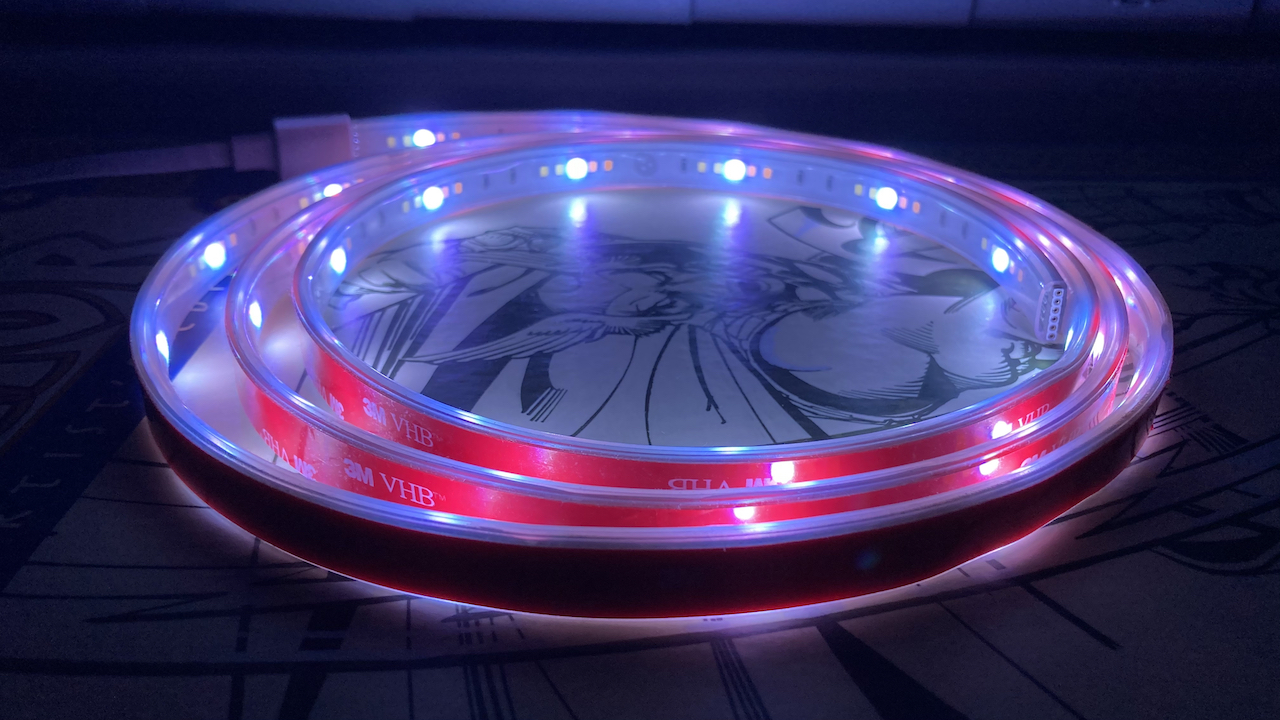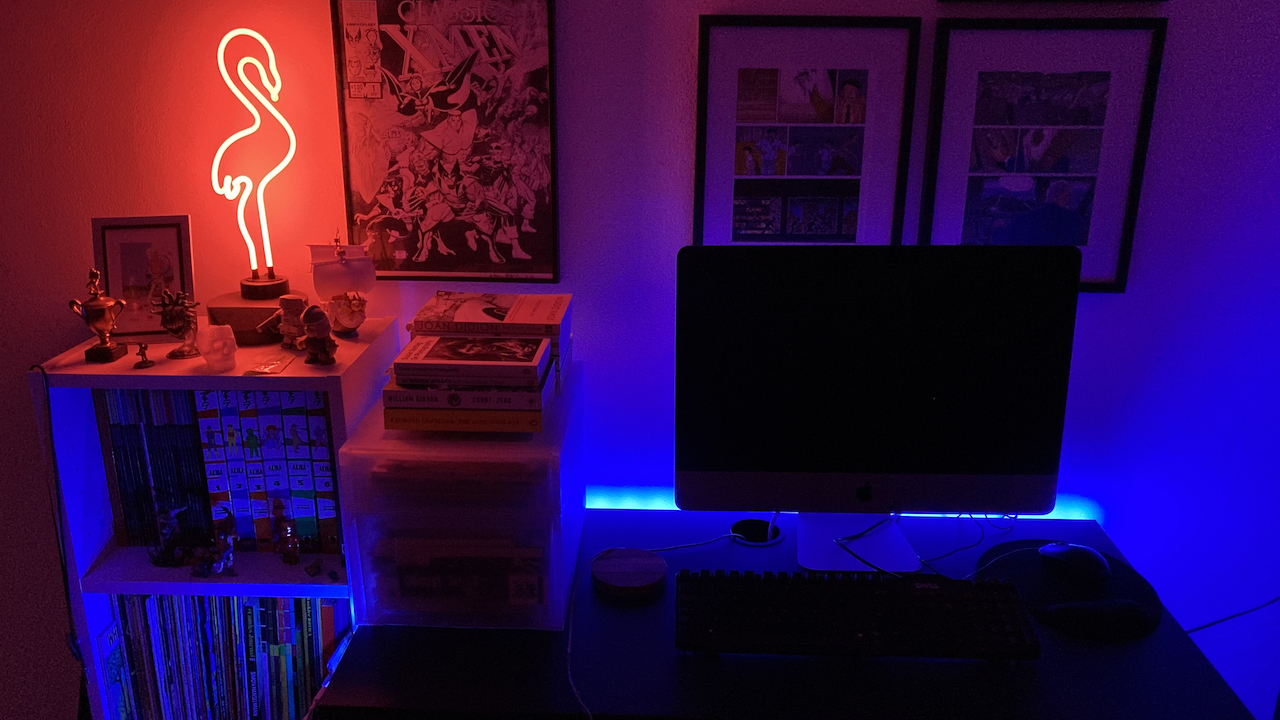Earlier this year, Nanoleaf unveiled a line of smart lighting that aimed to combine the brand’s high-quality tech with affordability. Known as the Essentials range, I’ve previously covered the smart bulb, which I was very impressed with.
The other product in this range is an LED light strip, which is a form of lighting that is currently having a big moment. If you jump on any Twitch stream, you’re bound to come across a streamer that has some form of light strip running around their desk or background, filling their shot with a nice RGB glow.
Despite this popularity, I’ve never been that into them. As someone who couldn’t care less about light strips, this really turned me around – despite a few small issues.

Nanoleaf Essentials Light strip
What is it?
Nanoleaf's take on the LED light strip.
Price
$99.99
Like
Wide range of vivid colour options, an easy way to change a room's atmosphere, very simple to set up.
No Like
Response time can be a bit sluggish, you'll need an alternative adhesive if the 3M backing becomes unstuck.
How does it work?
Like other Nanoleaf products, you can control this light strip via an official branded app, which gives you the option of setting with a single colour in Basic mode, or a series of colours that the strip will cycle through in Scenes.
You are able to pair it with a Google Assistant or Apple Homekit (the Nanoleaf Essentials range are actually the first Thread-enabled smart lights), but I was content with just using via Bluetooth.
One end of the strip needs to be plugged into an easy-access controller, which can be used to turn the light strip on and off, while also adjusting the brightness levels.
It also gives you the option to cycle through a handful of primary colours at the push of a button. It’s a good, quick alternative to using the mobile app, for those times where you just don’t feel like pulling out your phone and playing around with colour options.

Coloured in
I set up the Essentials light strip in my home office, which doesn’t get much natural light until the end of the day. The main lights in this room use blisteringly white bulbs, so having a warmer/coloured lighting option to offset it is definitely a welcome change of pace.
The Scenes category gives you the option of setting a solid white lighting mode, so I’ve mostly had the strip set to a 3000K warm light when working during the day.
The light strip has access to 16 million colours, and straight out of the box I had a lot of fun messing around with the strip, trying to get very specific shades of purple and green. When changing colours, there was an occasional delay in reaction time – similar to the lag I’d experienced with testing the Essentials bulb.
If you’re someone who loves to have all of your tech interacting with one another, you’re able to create room settings so multiple Nanoleaf lights are playing the same colour scenes. While my Essentials bulb and light strip are in different rooms, I appreciate being able to create a consistent vibe with both smart lights.
A sticky situation
This starter kit strip is two metres long, which covered three out of the four edges of my desk. If you have more light strip than you have space, you can shorten it by cutting the strip at specific points.
The light strip has a giant 3M strip that runs along its length, which you peel away as you attach it to a surface. Setting it up stressed me out a bit – what if I mess up and have to peel it off and do it all again? The strip is flexible enough that I didn’t have any problems with keeping it attached round my desk’s corners – but this is definitely a two-person job if you want to get it right.
You’ll really want to be sure of your strips’ placement, as once that 3M backing becomes unstuck, you’re not going to get it to stick down again. I spent a good amount of time trying to figure out where exactly I wanted to have the light strip in my apartment, because once you commit there’s no going back.

Is it worth it?
While the light strip’s $100 price tag is cheaper than other big name brands – a 2m long light strip from the Philips Hue range will set you back $135 – I still think it’s a bit of an ask. Had I not been given this product for review, I can’t see myself dropping that much money on one. Especially when you can mess it up.
But, I’d also say I’m not someone who really wanted or needed a light strip in their life, so your mileage may vary there.
As for performance, the occasional lack of response is frustrating, but since setting it up I’ve been using the same colour setting, or flipping through the quick options on the easy-access controller. It’s only a problem if you make it a problem.
Speaking of small problems, about an inch on one end of the light strip doesn’t stick properly. While it isn’t a huge deal, it’s one of those small, annoying things that you can’t not notice once you see it. I feel like I’m one bad knock away from accidentally peeling it off.
It’s easy to understand why this particular kind of lighting has become so popular. If you’re someone like me who is both lazy and has a design sense that can be best described as “a Pulp Fiction poster blu-tacked to a wall”, coloured smart lights have been a godsend.
It’s a simple way to bring a bit of personality and atmosphere to a normally drab room. If that’s all you want out of your smart lights, the Nanoleaf Essentials light strip gets the job done.
